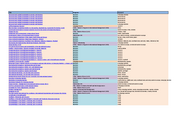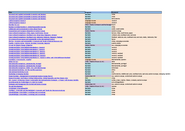Teaching at WU with EM/CEE Focus
The Competence Center is conducting an ongoing analysis of courses offered at WU Wien that relate to its core topics of Emerging Markets and Central & Eastern Europe. The following sections provide an overview of the relevant courses identified through a keyword analysis. The center has created an overview of prevalent topics, patterns, regions, and departments for the summer semester 2025 and the winter semester 2025/26.
In addition, lists of all identified courses from those two semesters can be downloaded at the bottom of this page.
Distribution by teaching programs
On average, about 46 relevant courses were offered per semester in the last two semesters. More than 70 % of these courses are at the Bachelor level, around 22 % at the Master’s level, and only 7 % at the PhD level.
EM&CEE related courses in WU Master’s Programs
Among the Master’s Programs, the Master of Laws (LL.M.) offers a large share of identified courses. Similarly, the CEMS (Master’s Program in International Management) and our special program Masterclass CEE appear to provide a considerable proportion of the course. Among Master elective courses and other Master’s programs, more such courses can be found.
Clustering of the courses (BA and MA level)
Five major thematic clusters have been identified across the analyzed courses. These include, to a large extent, courses in the areas of ‘Business Communication & Language’ and ‘International Business Management & Marketing’. A significant share of courses also falls within the fields of ‘Sustainability’, ‘Global Economics & Socioeconomics’, ‘Intercultural Competence’, and ‘Law and Regulation’. The visual overview illustrates how ‘Sustainability’ has gained increasing weight, complementing the traditionally strong fields of international management and communication.
Dominant keywords
The list of identified courses was created by searching for all courses that include specific regional references (such as ASEA, Africa, etc.) or thematic terms (such as developing countries, emerging markets, etc.). The frequency of these keywords provides an indication of which topics are relatively prominent.
From a keyword perspective, ‘China’ stands out as a popular focus, often appearing as a case study in relation to Asia. Unsurprisingly, ‘Asia’ itself also occurs frequently. In addition, ‘Russian’ appears commonly, as it is often offered as a language course. Other prevalent keywords include ‘(Eastern) Europe’ and ‘Emerging Markets’.
Regional-to-cluster linkages
Using the keyword analysis, each course’s thematic cluster can be linked to the specific keyword through which it was identified. The chord diagram visualizes these connections, highlighting the relationships between regional keywords and their corresponding clusters.
Within the ‘Sustainability’ cluster, there are strong connections to both ‘Latin America’ and ‘China’, underscoring the emphasis on how global environmental and economic challenges intersect with these key regions. The ‘Business Communication & Language’ cluster is closely tied to ‘Russia(n)’, reflecting the historical, social, and economic importance of language competence for engaging with Eastern Europe and post-Soviet contexts. Meanwhile, the ‘International Business Management & Marketing’ cluster shows pronounced links to ‘Emerging Markets’ and ‘Eastern Europe’, pointing to a strategic focus on business dynamics in rapidly developing economies and transitional regions.
The world map
The world map visualization underscores these findings: CEE and Asia appear as the two dominant regional anchors, while individual courses extend coverage to regions such as Latin America, Africa, and the Middle East. This shows the breadth of geographical focus offered by WU courses.
Overview of the EM&CEE courses at WU
Altogether, the results suggest that WU students are consistently exposed to topics that combine practical regional expertise with broader thematic approaches, equipping them to critically engage with economic, political, and social dynamics in global markets. Finally, the identified courses can be downloaded as Excel files for each of the last two semesters.


![[Translate to English:]](/fileadmin/wu/_processed_/7/0/csm_086-Laptop-960_v1_40a78ece68.jpg)





